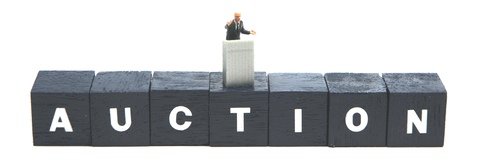You have a major choice when determining your PPC bidding strategy: manual or automated. Your decision will determine the extent of your control over individual campaigns and keywords, as well as how your daily budget is allocated. In this post, we’ll explore the two primary options in AdWords bidding, and show why we prefer one to the other most of the time.

Manual vs. Automated
Manual PPC bidding allows you to set your bid and alter it at any time. Currently, this is Google AdWord’s default setting. You dictate a maximum cost per click, though you often won’t end up paying that much. Ultimately, you pay the minimum amount required to hang on to your ad’s position.
For manual bidding, you must spend time monitoring your campaign. Watch at the keyword level for ad positions, cost per click and other analytics to figure out if you want to raise, lower or maintain your bids. A manual strategy lets you make these changes at both the ad group and keyword level. This takes some time, but gives you complete control.
On the other hand, we have automated bidding. Google calls automated bidding “the simplest and most commonly used bid strategy”; and while automated PPC bidding may take less time, it also reduces your control.
As with a manual strategy, you can set and change a maximum cost per click, though only at the campaign level; Google manages your ad group and keyword bids. This tends to be the choice of managers running several campaigns at one time, or those new to PPC bidding and without the knowledge to monitor effectively.
In an automated bidding scenario, Google AdWords sets bids with the intent of maximizing clicks. However, you give up the ability to allocate more or less budget to particular ad groups and keywords based on weekly or daily performance variations.
Why We Choose Manual
Within the manual and automated options, you’ll find numerous ways to set your own campaign. Still, the primary choice is between these two strategies. We prefer manual, and retaining control of ad group and keyword bids.
At first, the word “automated” might make that option seem more attractive, especially to someone with limited PPC experience. However, some automated settings, such as “enhanced cost per click,” use a range of factors that we simply can’t monitor manually.
Any automated strategy depends on the history of your account, and the reliability of tracking tools. If, for instance, there’s a tracking glitch, leaving you with zero conversion data, Google still uses that information to place bids. Anything from a bad sales week to running out of stock can cause the system to misinterpret your data, and it’s not because Google’s being tricky. It’s because the machine can’t recognize these real-life factors.
Imagine a scenario where a computer gets passed from one person to another. If the first user has an established search style, and frequently visited sites have bids tailored to that search, what happens when the new user starts browsing? Google has no idea a different person is searching, and the resulting bids might be off the mark.
Once your automated PPC bidding acts on misinterpreted data, it’s tough to come back. First, you have to notice that there’s a problem, which is challenging if you’re running multiple campaigns. Second, it will take some scrambling to repair the damage of faulty data.
This isn’t to say automated bidding can never work. With testing and close monitoring, it can work great. The concern is that you’re going to spend as much time monitoring the automated process as you would managing the manual one. At that point, you have to think about which option costs you more, and how well your staff can manage and/or monitor.
Considering a Hybrid Strategy
For those managing multiple ad campaigns, a hybrid strategy using both manual and automated PPC bidding might be best. Take a look at your top performers, keywords, analytics and budget, and be open to testing both. No two campaigns will be exactly the same, so it’s important to understand and weigh all of your options.
If you decide to try automated bidding, we recommend investigating cost-per-acquisition (CPA) bids, which is part of Conversion Optimizer. To do this, Google requires at least 15 conversions in the last 30 days, though we think waiting until you’re closer to 30 and looking over the past year’s conversions is a better idea.
Implementing CPA bids will tell Google to look at how many ad clicks you get before someone actually completes a conversion – whether that means making a purchase or otherwise interacting with your site. With the focus on improving conversions, you work toward lowering your CPA.
Keep it Simple with Manual Bidding
We endorse trying all bidding options that may apply to your advertising goals, so long as you have a good benchmark to start. Our preference is for a manual AdWords bidding strategy, though we recognize situations where an automated route might be ideal.
Be aware, however, that automation comes with the necessity to monitor closely and have a strong sense of your goals. Without that, you risk spiraling into a “maybe it’s this, maybe it’s that” cycle when something goes wrong. Automation might sound simpler, but a manual PPC bidding strategy keeps you safely in control.






